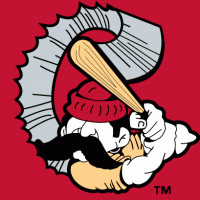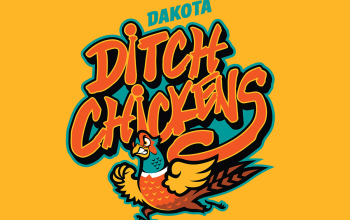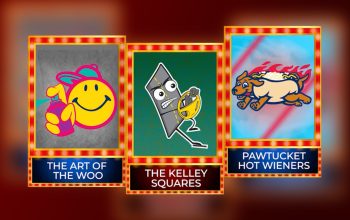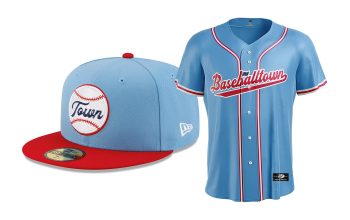In the late 1800s, Williamsport, Pennsylvania, was home to more millionaires per capita than any other town in the United States. The source of their income was a booming lumber industry that put the town on the map. So when a short-season Single-A baseball team started playing in Williamsport in 1994, the team’s staff had some ideas about a potential name.
“When we first moved here in 1994, believe it or not, we wanted to be the Lumberjacks,” said the team’s general manger, Doug Estes. “Our ownership group here at the time, which was two gentlemen out of upstate New York, outvoted us two to two.”
 So the team took on the identity of its parent club and was called the Williamsport Cubs.
So the team took on the identity of its parent club and was called the Williamsport Cubs.
“We were like, that’s boring and who wants that?” Estes said. “We had this crappy logo. We were like, geez. We really kind of missed the boat on that, to be honest.”
A few years later, changes in ownership and affiliation (from Chicago to Pittsburgh) forced the team to adopt a new identity. In 1999, Estes and the staff got their wish and adopted an identity that paid homage to their town’s storied history—appropriate for the baseball team, considering that the construction of the now almost 90-year-old facility that they play in was funded by lumber baron J. Walton Bowman.
 Williamsport sits on the west branch of the Susquehanna River, which facilitated the transport of harvested logs to the town’s many mills. The nickname itself comes from the tool those lumbermen used in their trade.
Williamsport sits on the west branch of the Susquehanna River, which facilitated the transport of harvested logs to the town’s many mills. The nickname itself comes from the tool those lumbermen used in their trade.
“The crosscut saw is what they used as their tool of choice to harvest the lumber,” Estes said. “That’s kind of the impetus of the name.”

 The first Crosscutters logo was drawn by a local artist and featured a character who would become the team’s first mascot, Rusty Roughcut. The logo had to be developed quickly because the team was caught somewhat off guard by the affiliation change, but it lasted for seven seasons. (On the bright side, the necessity for a quick change meant that the team could forego the pageantry of a rigged name-the-team contest that every other minor league baseball team seems to go through.)
The first Crosscutters logo was drawn by a local artist and featured a character who would become the team’s first mascot, Rusty Roughcut. The logo had to be developed quickly because the team was caught somewhat off guard by the affiliation change, but it lasted for seven seasons. (On the bright side, the necessity for a quick change meant that the team could forego the pageantry of a rigged name-the-team contest that every other minor league baseball team seems to go through.)
Before the 2007 season, the team would change affiliations again, this time to their current parent club, the Phillies. While they did not want to change names, it was time for an update. The Crosscutters brought in Plan B Branding, now, of course, known as Brandiose, and they had some ideas.
“Williamsport was pretty early in our careers,” said Brandiose partner Jason Klein. “We were still sort of figuring things out in the minor league baseball universe and where we could take design.”
When the Brandiose guys visited Williamsport, they were struck by a particular aspect of the town’s lumber history.
“All of these lumber barons had these mansions on a street still today named Millionaire’s Row,” said Brandiose’s Jason Klein. “That’s where we went first, we drove down Millionaire’s Row and we looked at all these mansions.”
 Those long-ago residents of Millionaire’s Row inspired a logo concept that Klein and his partner Casey White had to flesh out.
Those long-ago residents of Millionaire’s Row inspired a logo concept that Klein and his partner Casey White had to flesh out.
“We were really excited about the idea of playing off of the millionaires concept, and early on, we had lots of sketch concepts off the idea of the lumber barons,” Klein said. “There was a character that looked sort of like a Monopoly man.” (If it had come later, I would have been sure it was based on John Hodgman’s deranged millionaire character from The Daily Show.)
Of course, the final product was more Brauny Man than Monopoly Man. This is in part because the lumber industry in Williamsport is practically nonexistent now, replaced in part by marcellus shale gas production, and the team wanted to focus more on the heritage of the lumbermen themselves rather than the financial peaks and valleys the town has experienced.
“I could conceivably see that we went more of the lumberjack route as opposed to the lumber baron route because, you know, there’s no more lumber barons,” Klein said.
“At that turn-of-the-century time, this place was just an amazing place to live,” Estes said. “They say, and this is a couple of natives talking, that we had trolleys before Philadelphia did. We had electricity before Philadelphia did. This is the story.”
But after decades of environmentally unsound logging practices and swings in the economics of the lumber industry, the town looks decidedly different now.
“Back in the day, they pretty much wreaked havoc with the trees here. I mean, they cut them all down,” Estes said. “They cut so much, and they were not replanting. They cut themselves out of business.”
So the team went with a more straightforward lumberjack approach to their identity. The logo suite reflects an early phase of Brandiose’s strategy. As compared with their current approach, which Klein describes as creating a series of logos that contribute to a larger narrative from different angles, the Crosscutters logo set is more of a deconstruction of the primary logo.
“When we got started, gosh, 15 years ago, we were looking at what people were doing in the sports industry,” Klein said. “It really started in the ’90s with SME Branding. One of the things that we noticed with them and their design was not only did they have a primary logo and some secondary logos, but they had things called ‘peel-ables,’ where you could peel off different elements that would work by themselves independently.”
 One of these deconstructed logos is a one-color cap logo that looks flat in print or on screen, but is embroidered in three dimensions. (Click on the cap image at right to embiggen and you’ll see what I’m talking about.)
One of these deconstructed logos is a one-color cap logo that looks flat in print or on screen, but is embroidered in three dimensions. (Click on the cap image at right to embiggen and you’ll see what I’m talking about.)
For a team that plays a short season in an old stadium in a small market, the Crosscutters have a lot going on. From the first days of the franchise, team staff wanted to push the envelope with a unique team name as early as 1994, when that sort of thing was just starting to catch on, but couldn’t convince ownership. Then, a quick-fix identity lasted seven seasons after a sudden affiliation change in 1999. And today, the team’s current identity represents important early work from one of the giants in the field of minor league baseball branding.
















